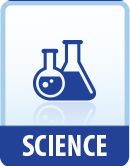|
This section contains 369 words (approx. 2 pages at 300 words per page) |
World of Scientific Discovery on John Jacob Abel
John Jacob Abel is called the father of modern American experimental pharmacology. He was the first to isolate a form of the hormone epinephrine and to crystallize insulin.
Abel was born and raised on a farm near Cleveland. He interrupted undergraduate studies at the University of Michigan to teach and serve as superintendent of schools in LaPorte, Indiana. He then spent seven years studying medicine in Europe, earning a doctorate in physiology from the University of Leipzig, Germany in 1886 and an M.D. from the University of Strasbourg (then in Germany) in 1888.
In 1891 he established the first modern department of pharmacology in the United States at the University of Michigan. Two years later he set up a similar department at Johns Hopkins University, where he remained for the rest of his life.
Abel began investigating adrenal gland extracts in 1895, shortly after their actions were noted by Edward Sharpey-Schäfer and others. Using a complicated chemical process involving a benzoyl derivative, in 1899 Abel isolated several salts of a substance secreted by the adrenal medulla. He named his product epinephrine.
A visit to Abel's laboratory inspired the chemist Jokichi Takemine to devise a simpler process that isolated the crystalline hormone itself.
In 1912 Abel developed vividiffusion, a method of dialysis, to remove waste products from the blood. In his dialysis machine, an animal's blood treated with the anti-clotting agent hirudin flowed through membrane tubing immersed in a salt solution. Osmotic pressure removed impurities but not cells and plasma, while oxygen went from the salt solution into the blood. The now-purified blood flowed back into the animal's body. Abel also discovered how to store large amounts of blood without damaging the blood cells. The method, called plasmapheresis, was a forerunner of blood banks.
Abel went on to study poisons, especially the mushroom Amanita phalloides and the venom of the tropical toad Bufo agua, which contains seven percent epinephrine. He isolated the crystalline form of insulin in 1926. Abel's drive and intellect did not diminish with age. At 75 he began studying how tetanus toxin affected the body's nervous system.
Among his many honors were memberships in the National Academy of Sciences of the United States of America and the Royal Society (London).
|
This section contains 369 words (approx. 2 pages at 300 words per page) |


